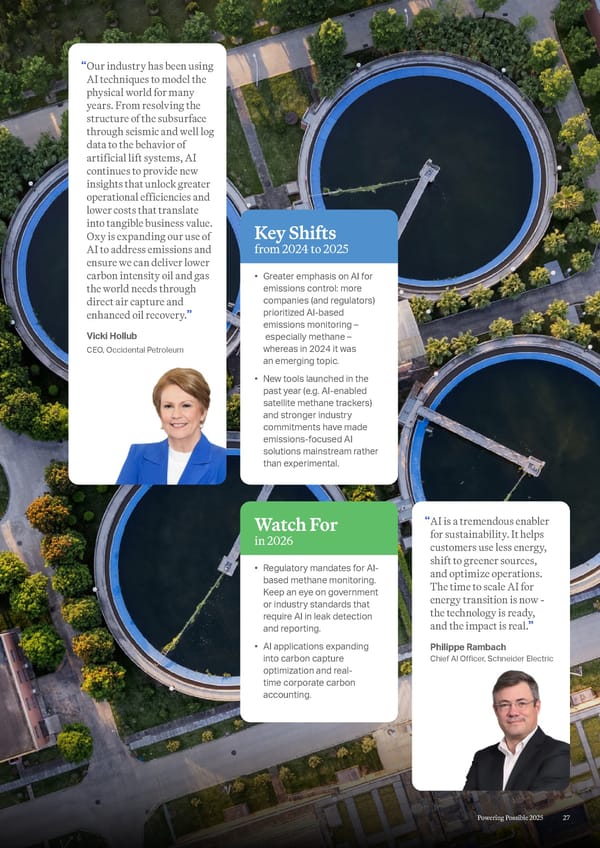Key Shifts from 2024 to 2025 • Greater emphasis on AI for emissions control: more companies (and regulators) prioritized AI-based emissions monitoring – especially methane – whereas in 2024 it was an emerging topic. • New tools launched in the past year (e.g. AI-enabled satellite methane trackers) and stronger industry commitments have made emissions-focused AI solutions mainstream rather than experimental. Watch For in 2026 • Regulatory mandates for AI- based methane monitoring. Keep an eye on government or industry standards that require AI in leak detection and reporting. • AI applications expanding into carbon capture optimization and real- time corporate carbon accounting. “ AI is a tremendous enabler for sustainability. It helps customers use less energy, shift to greener sources, and optimize operations. The time to scale AI for energy transition is now - the technology is ready, and the impact is real.” Philippe Rambach Chief AI Officer, Schneider Electric “ Our industry has been using AI techniques to model the physical world for many years. From resolving the structure of the subsurface through seismic and well log data to the behavior of artificial lift systems, AI continues to provide new insights that unlock greater operational efficiencies and lower costs that translate into tangible business value. Oxy is expanding our use of AI to address emissions and ensure we can deliver lower carbon intensity oil and gas the world needs through direct air capture and enhanced oil recovery.” Vicki Hollub CEO, Occidental Petroleum 27 Powering Possible 2025
 Powering Possible 2025: Unleashing AI for Energy and Energy for AI Page 26 Page 28
Powering Possible 2025: Unleashing AI for Energy and Energy for AI Page 26 Page 28